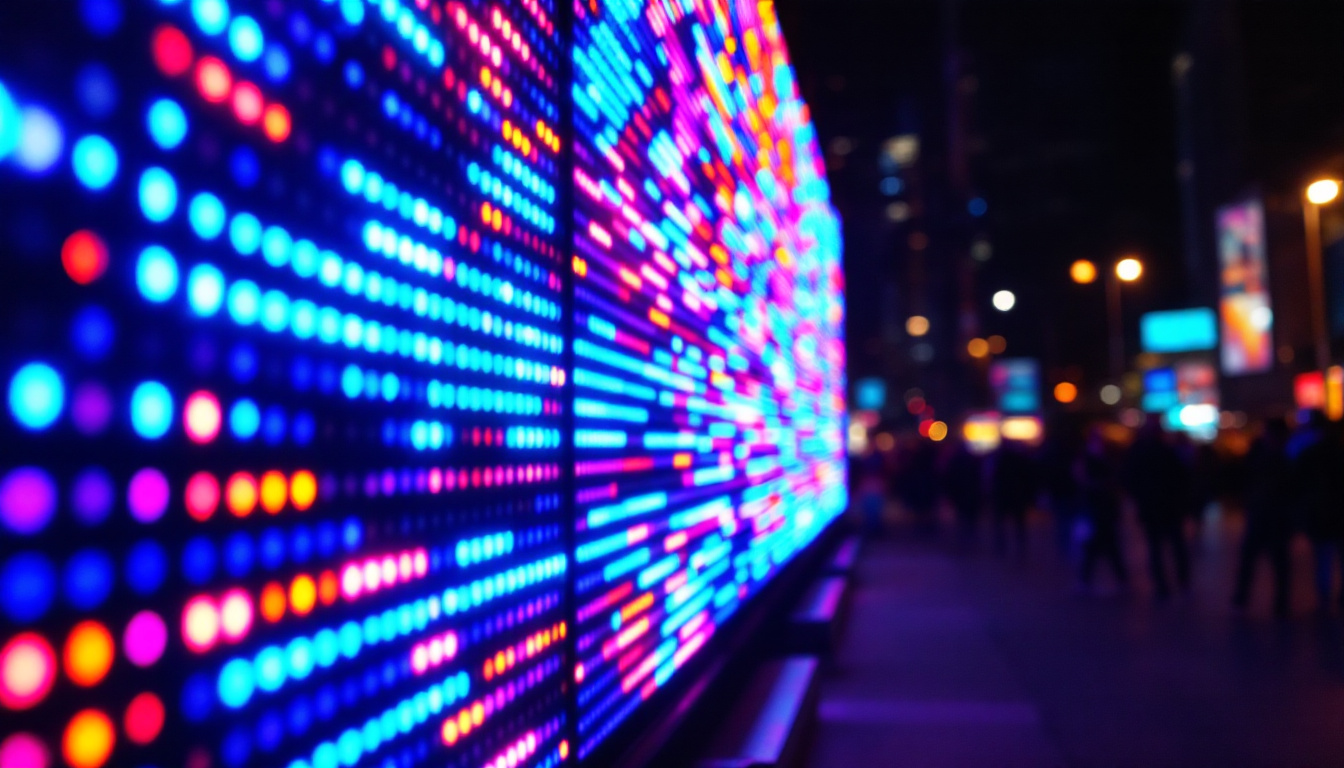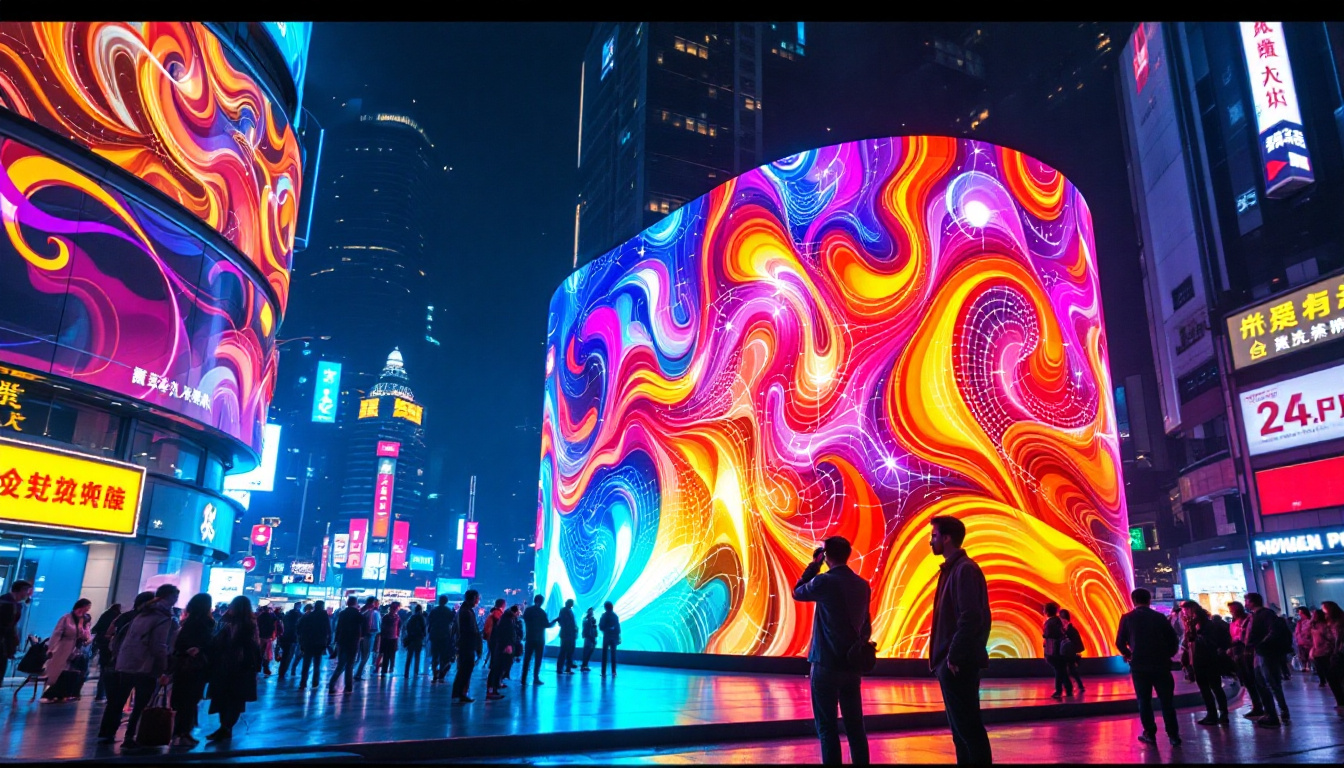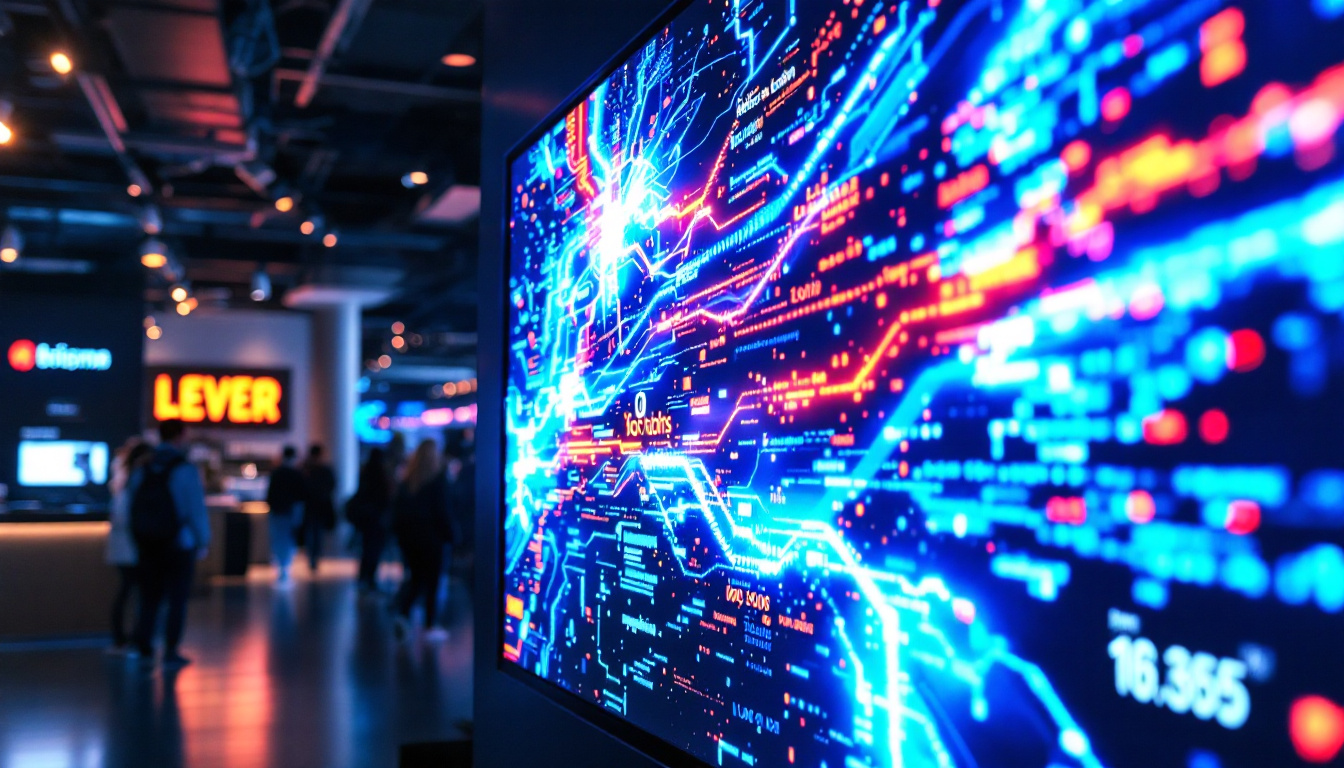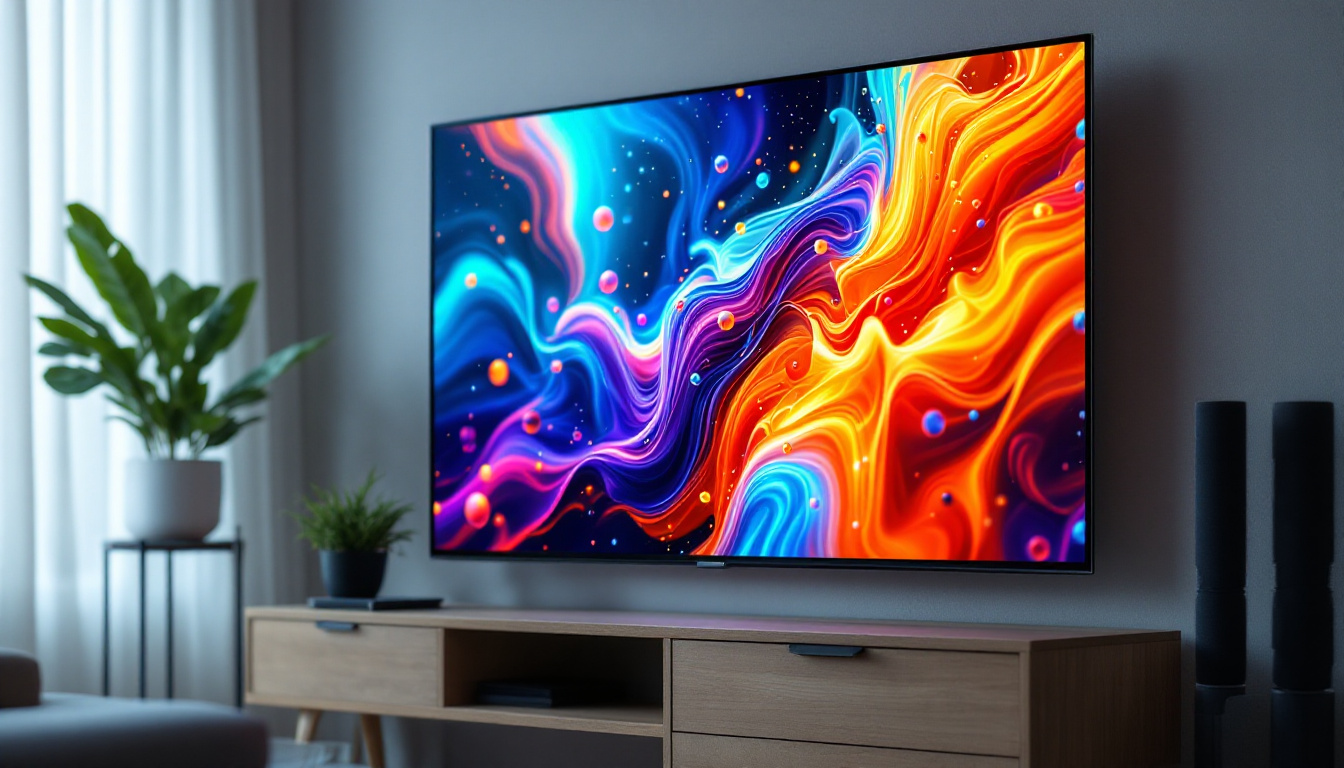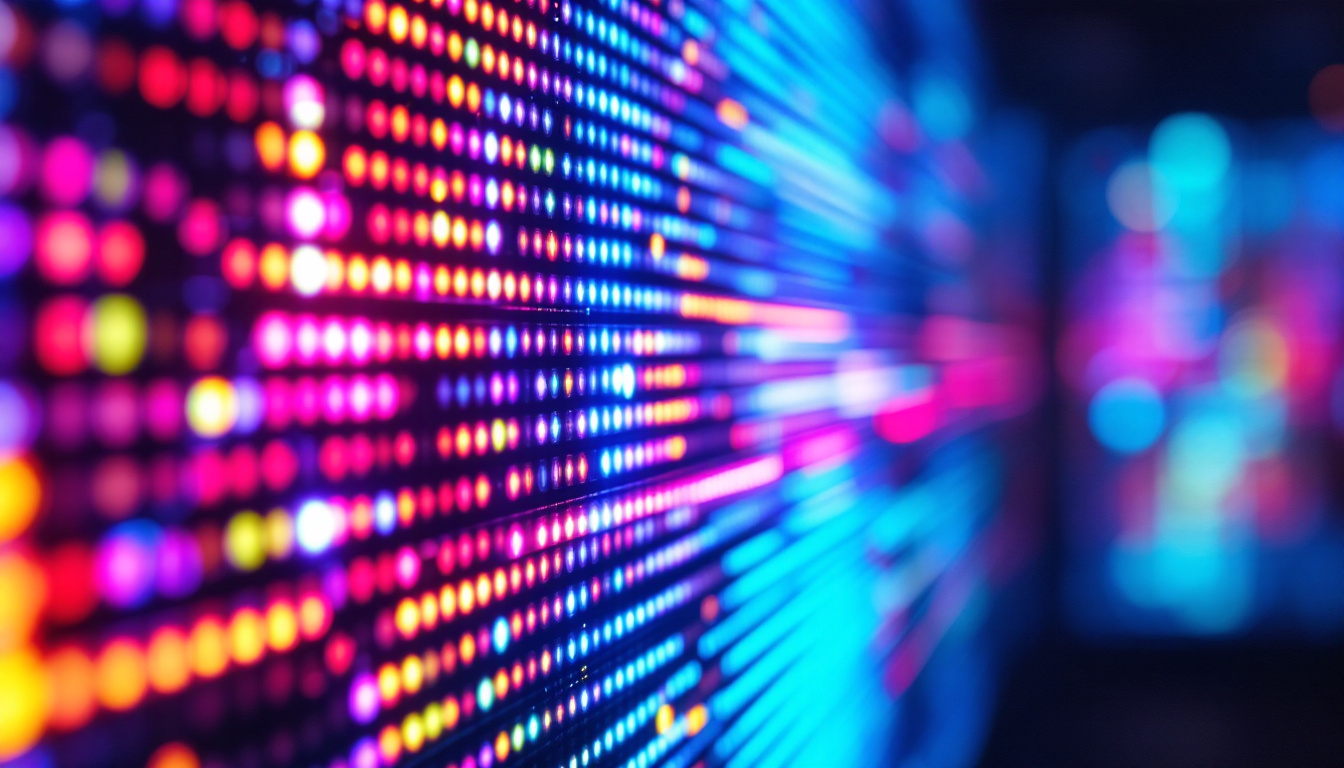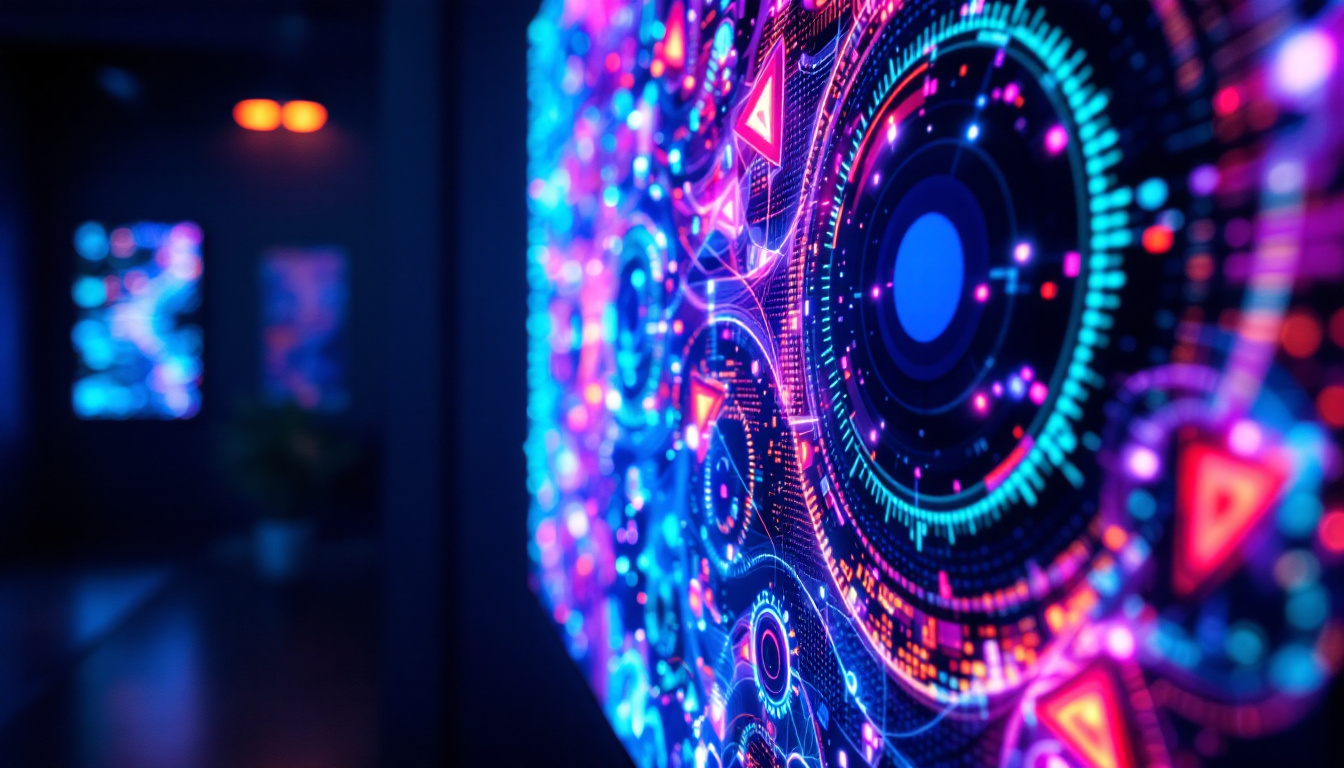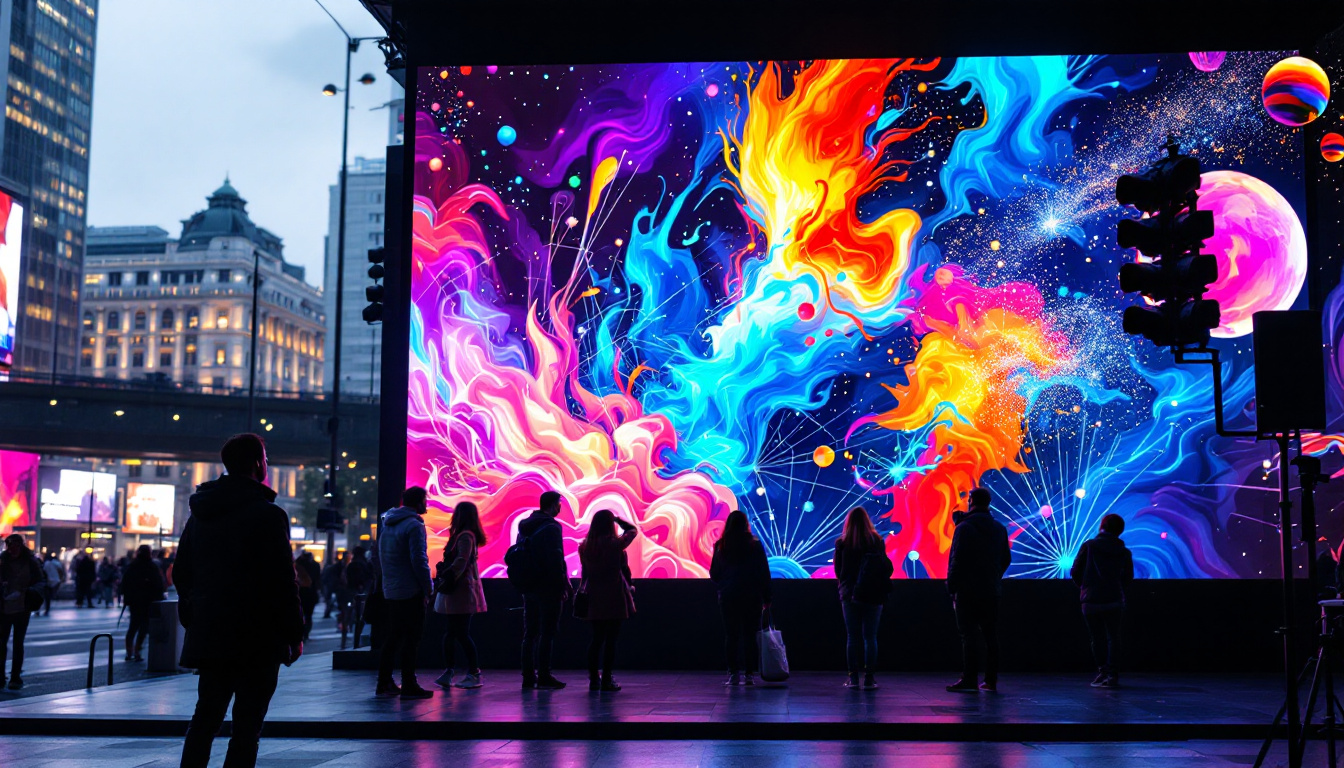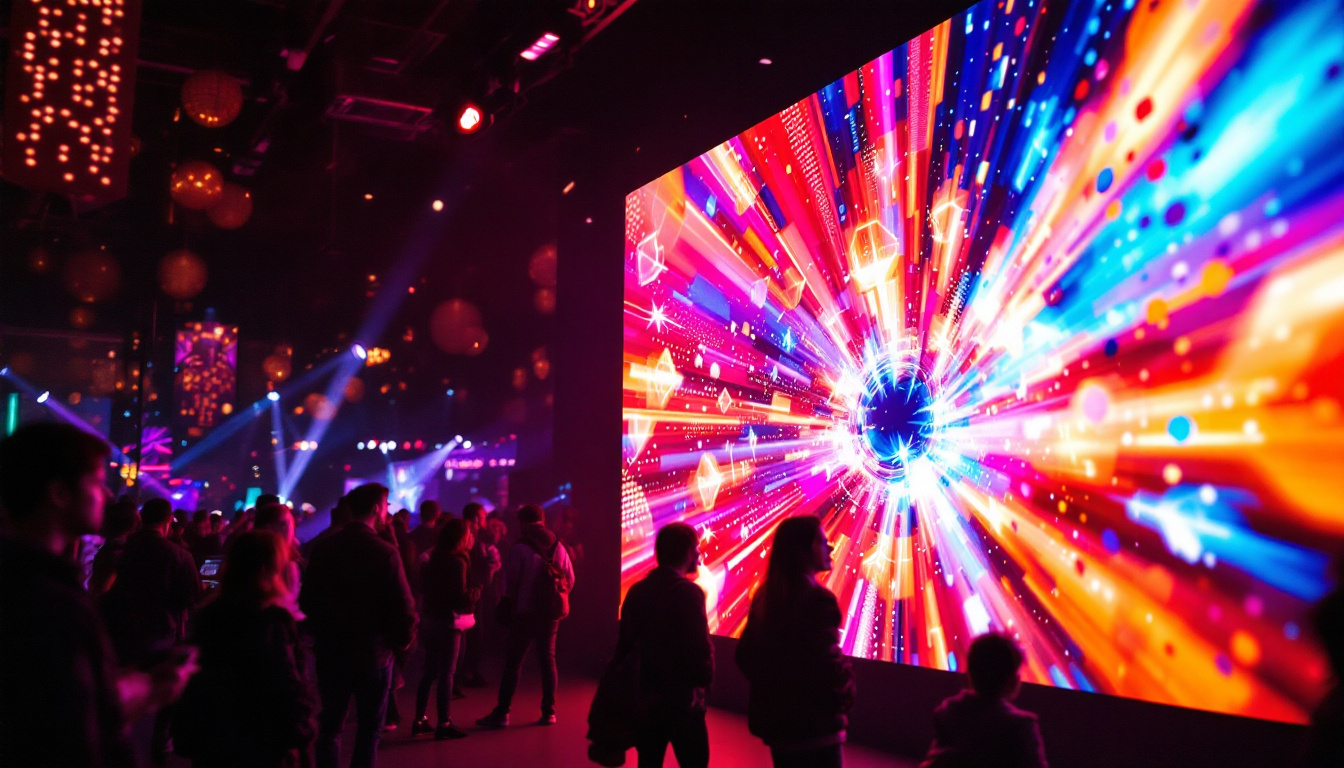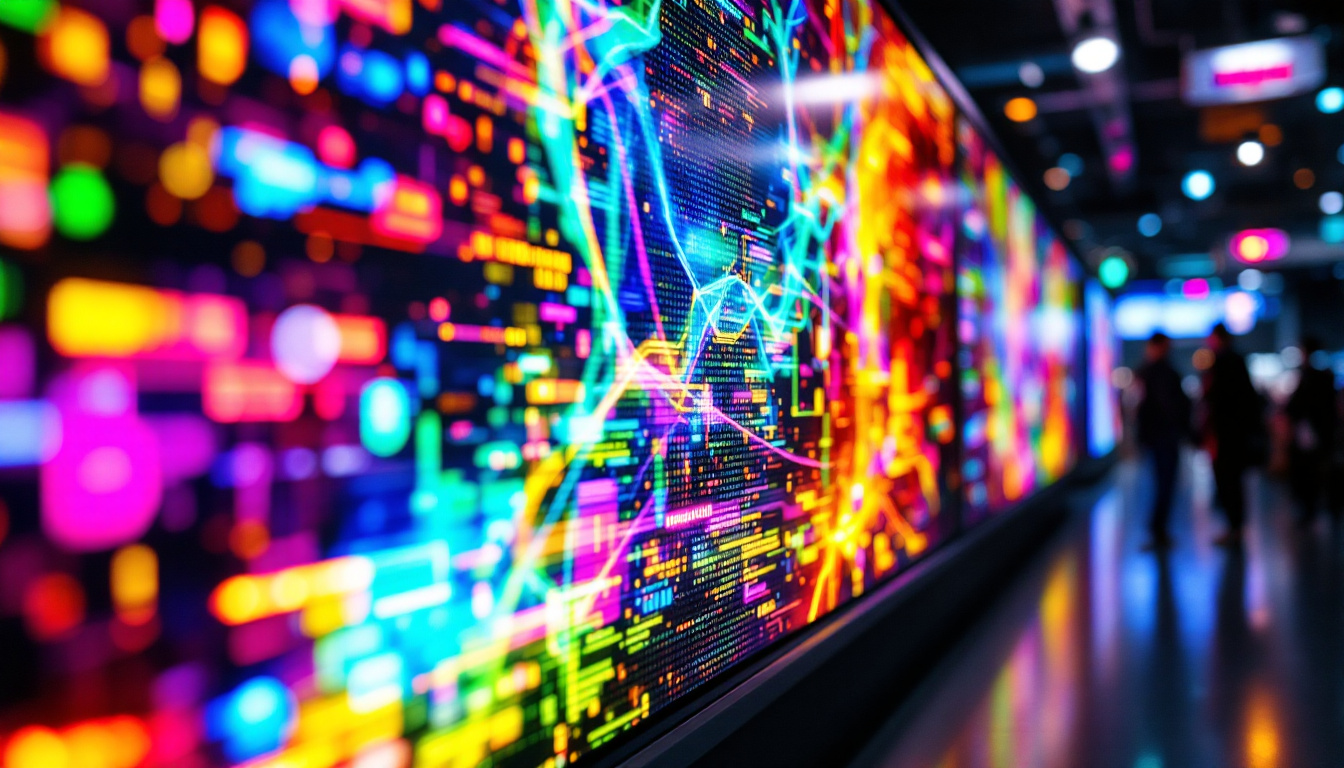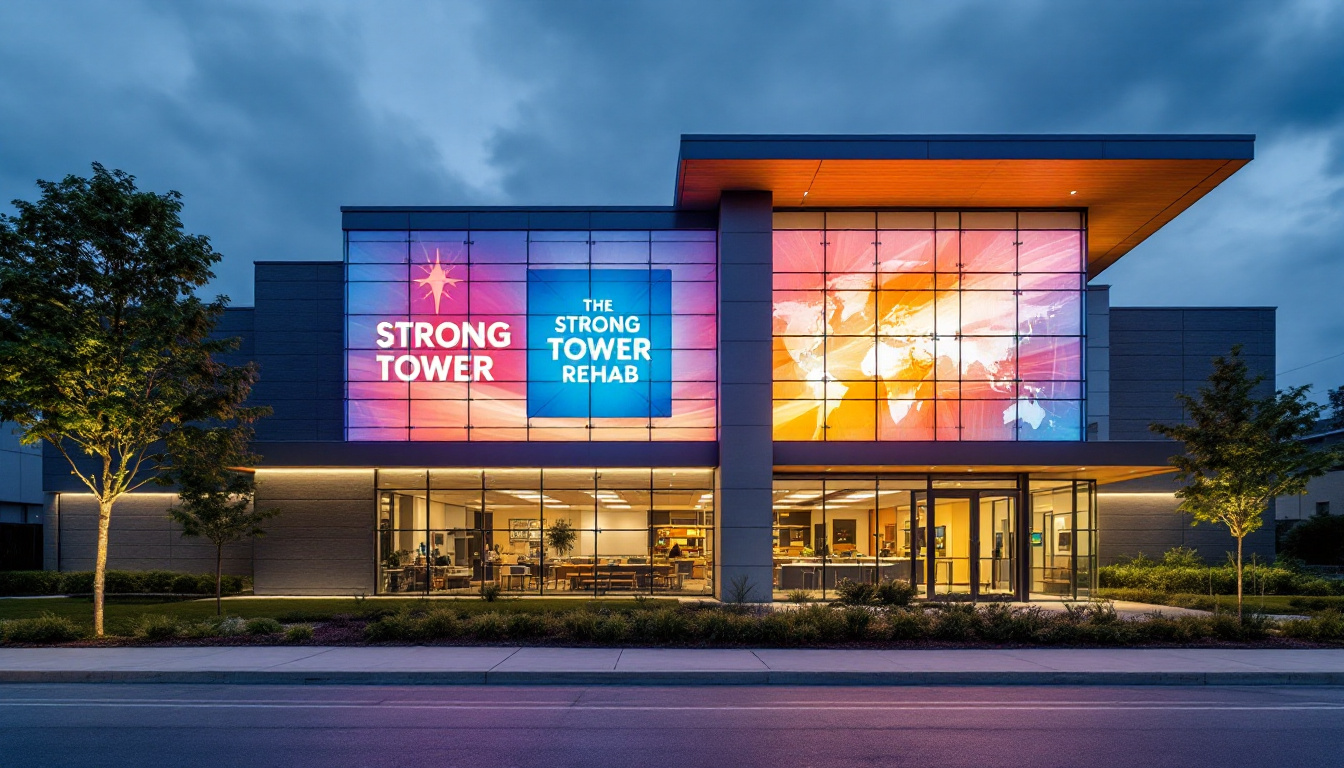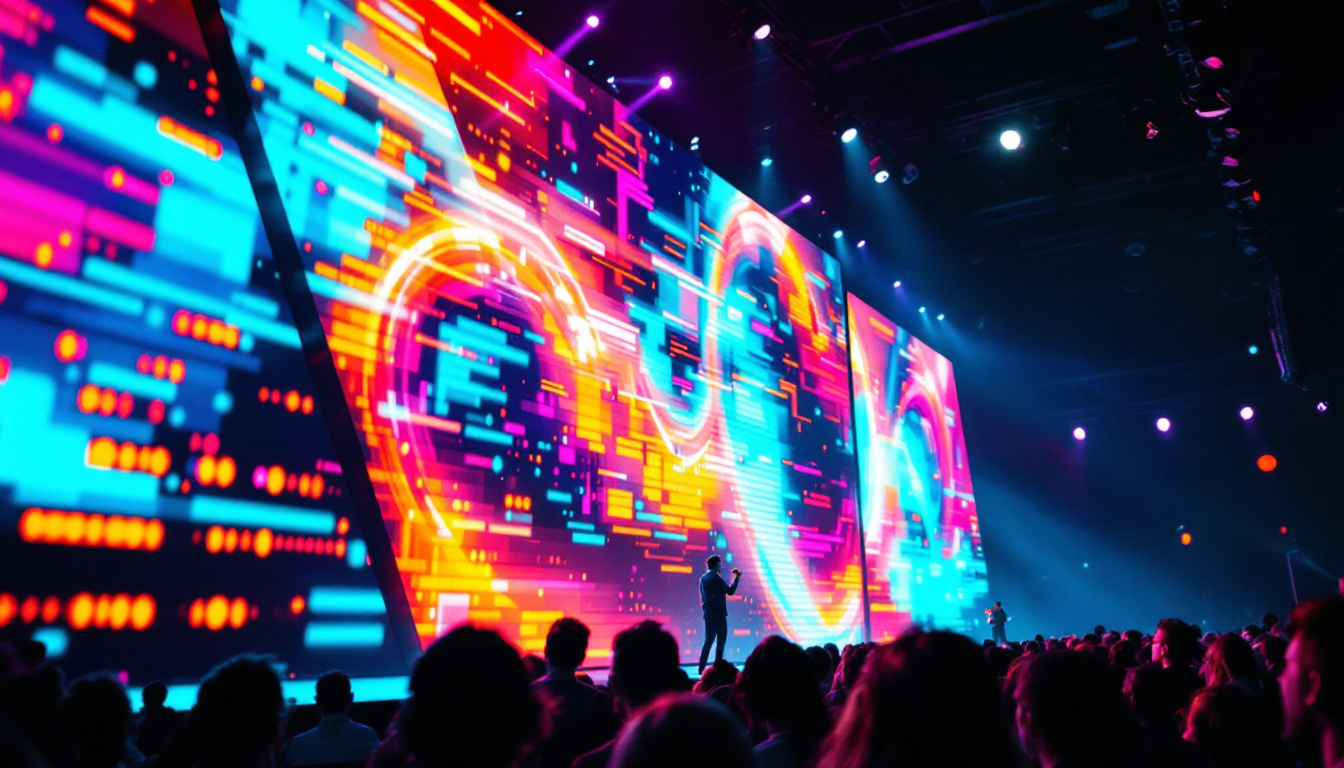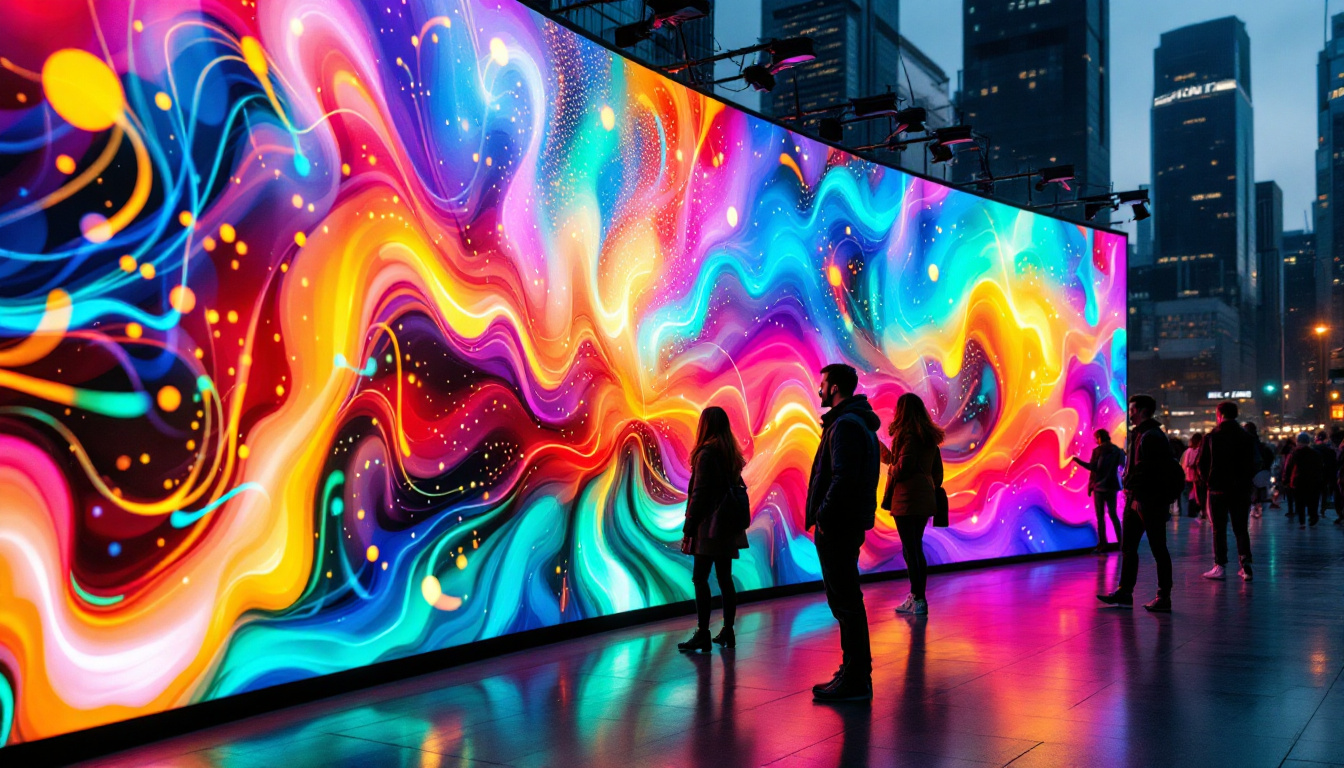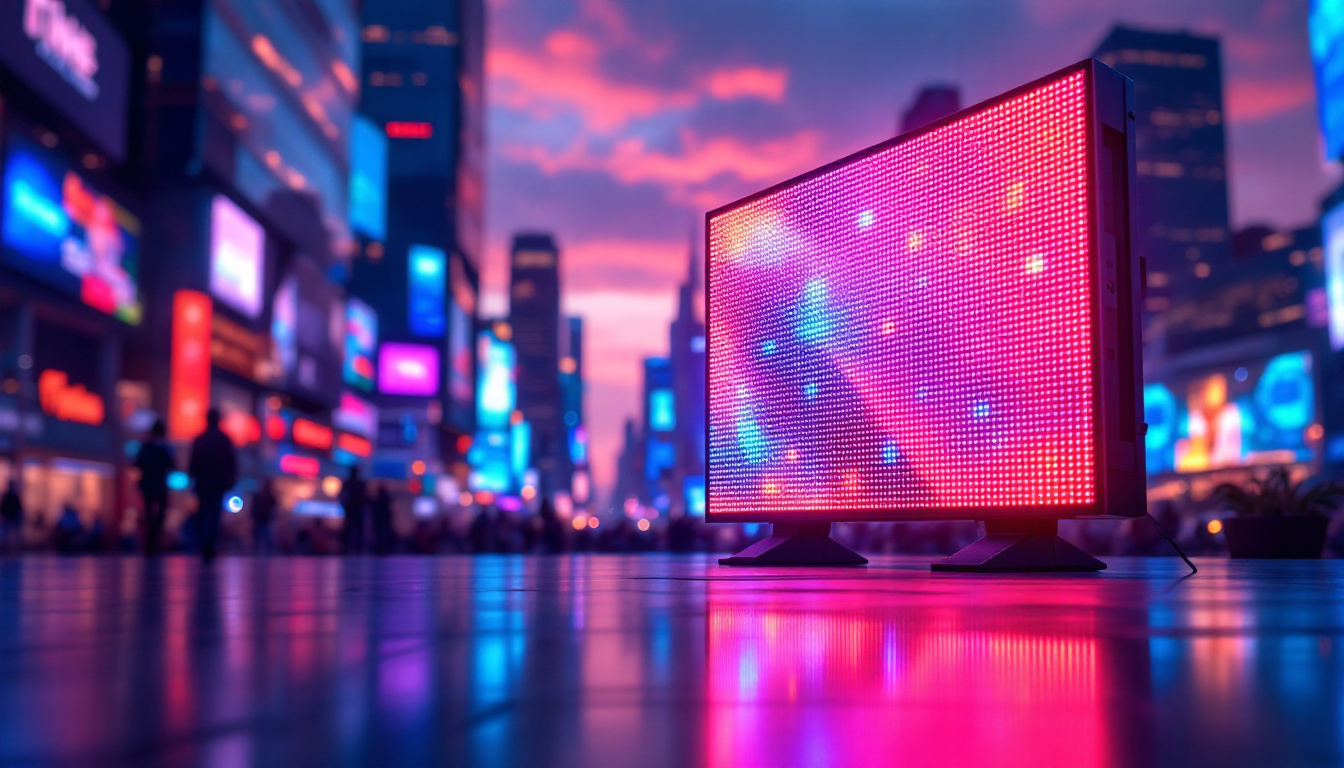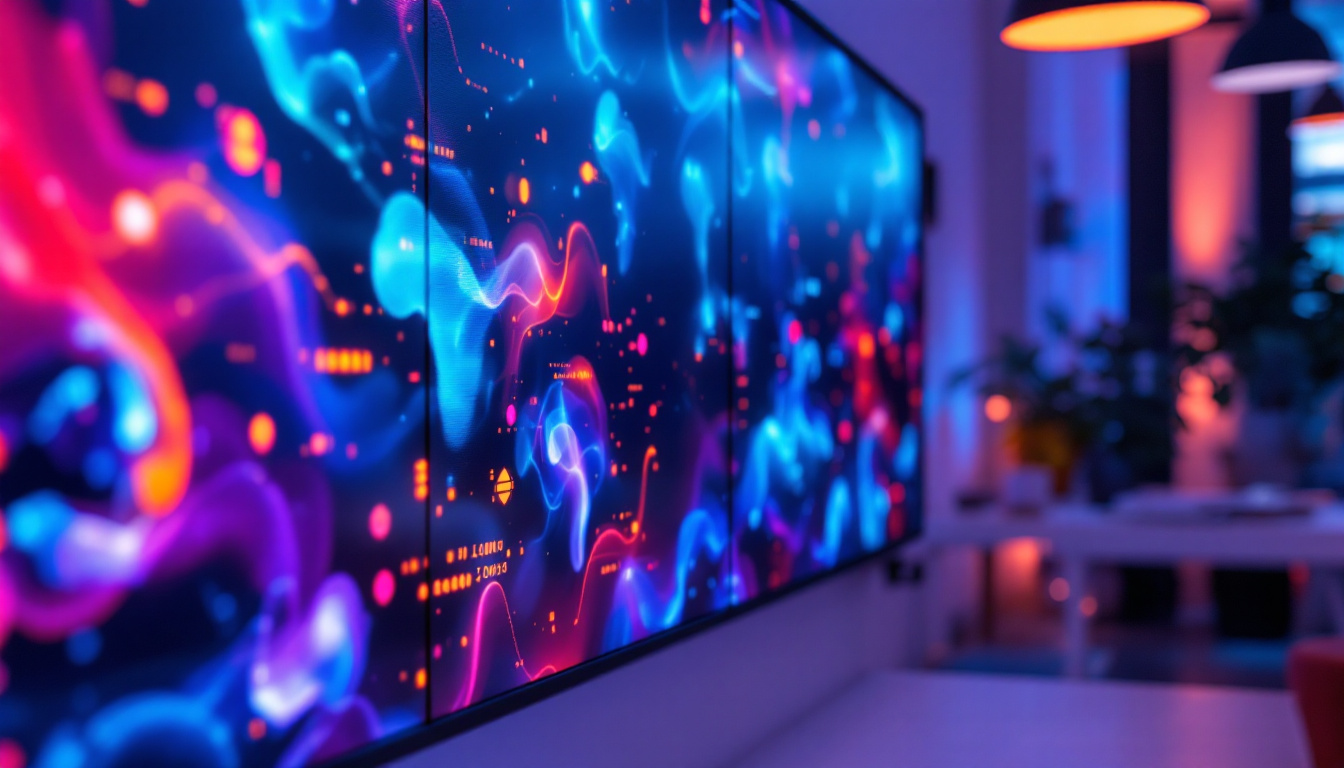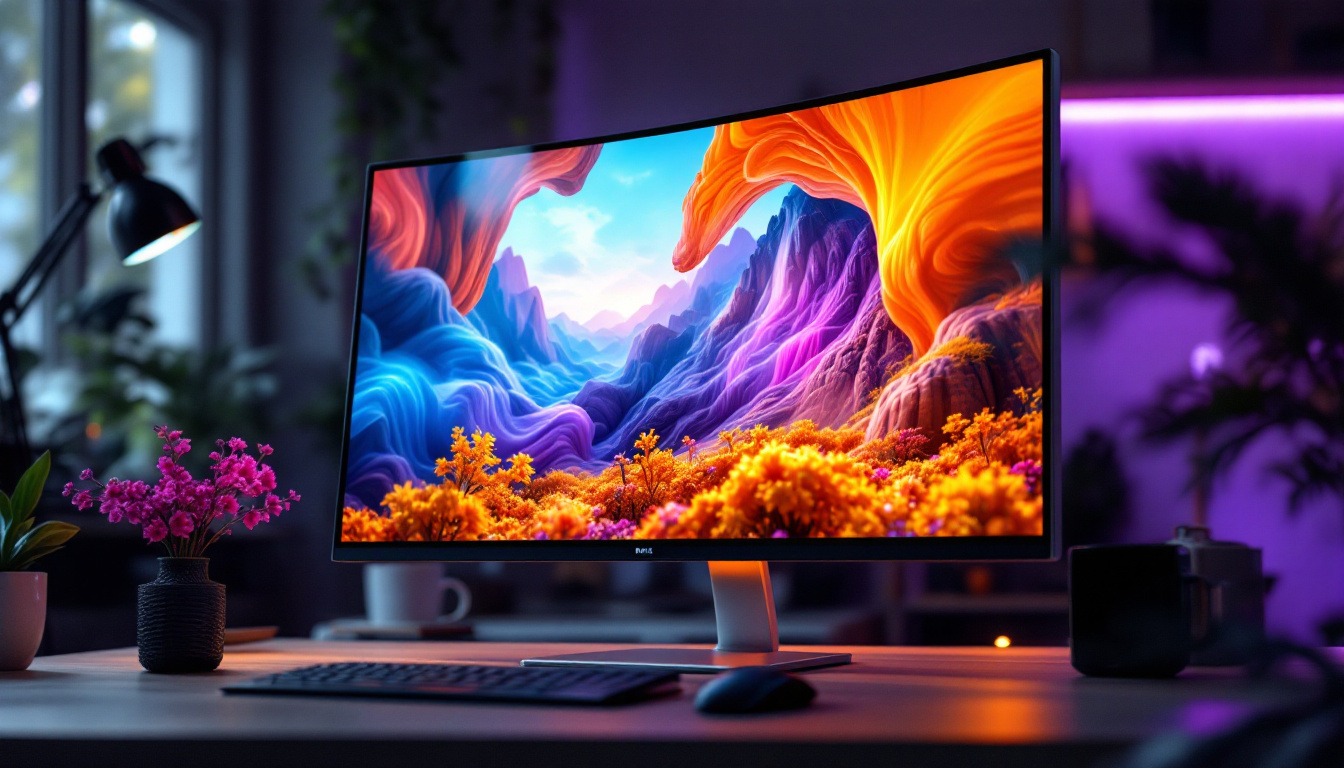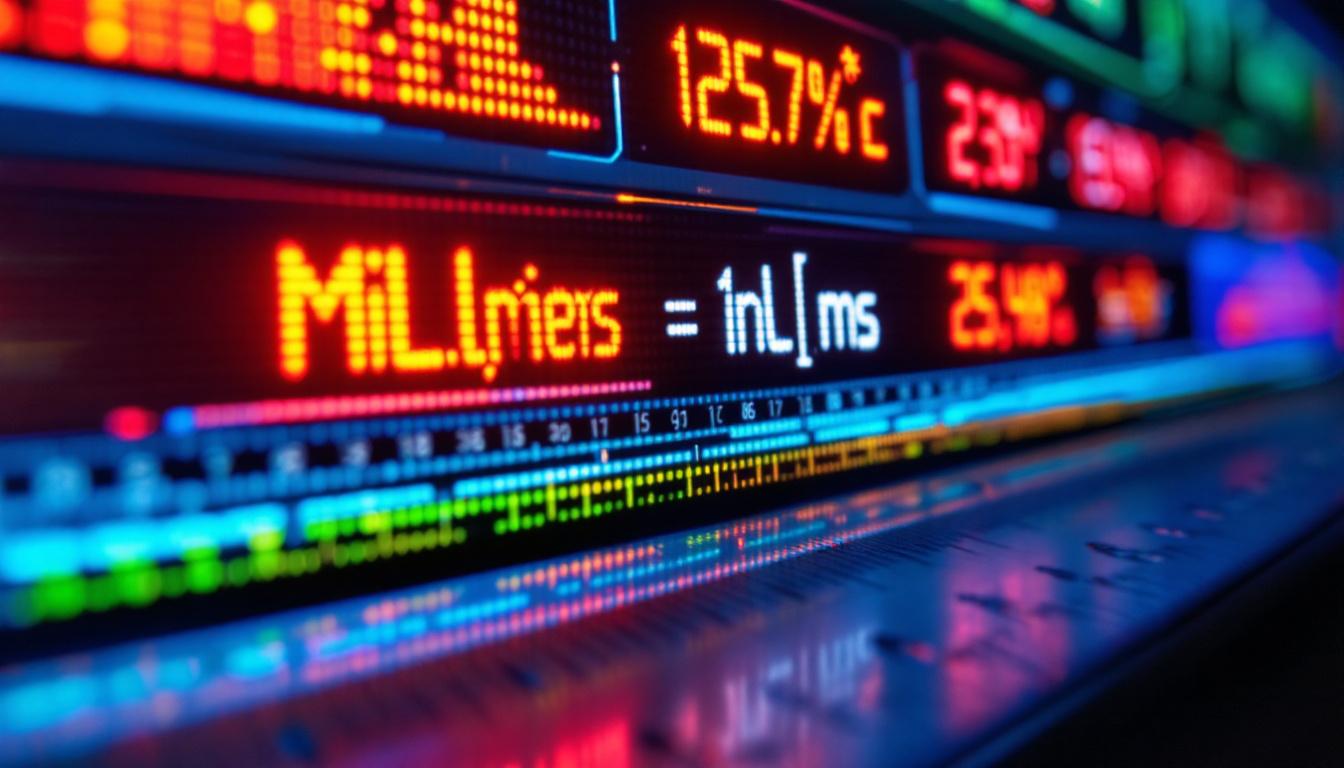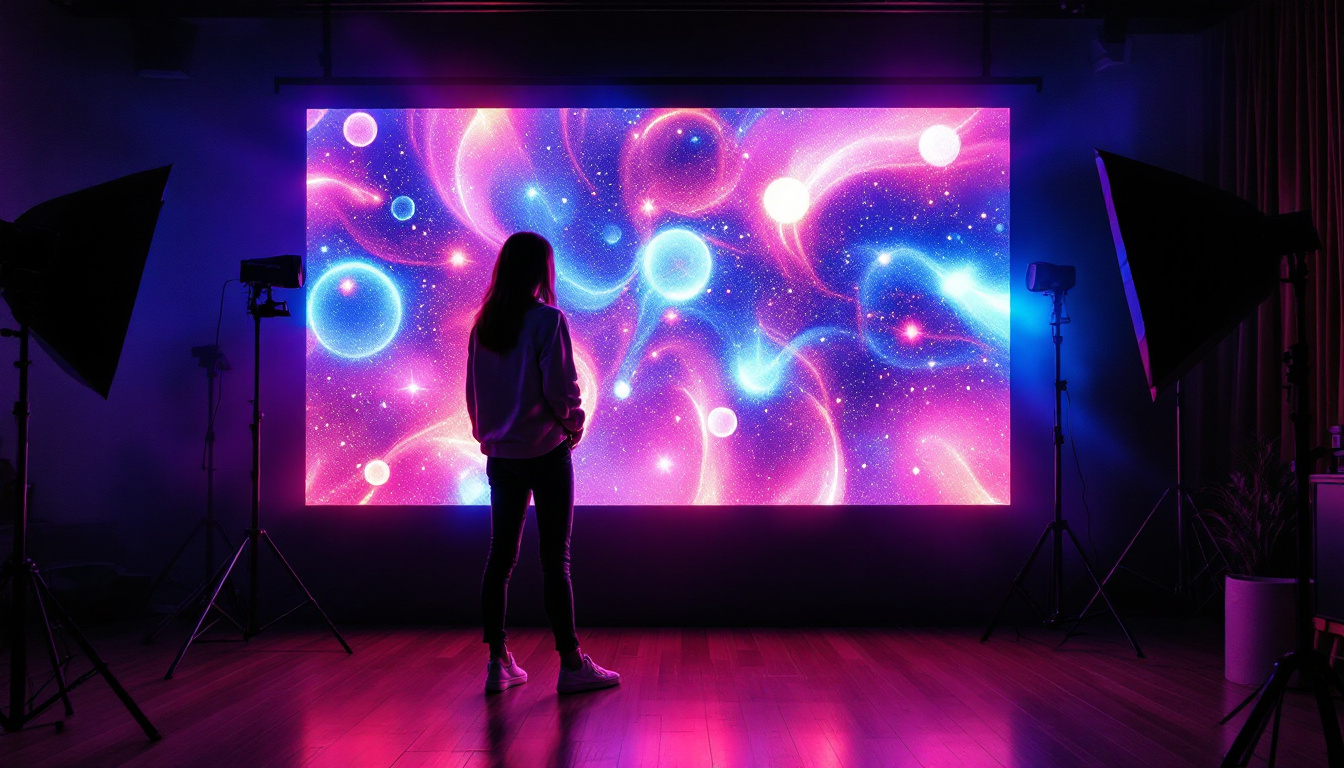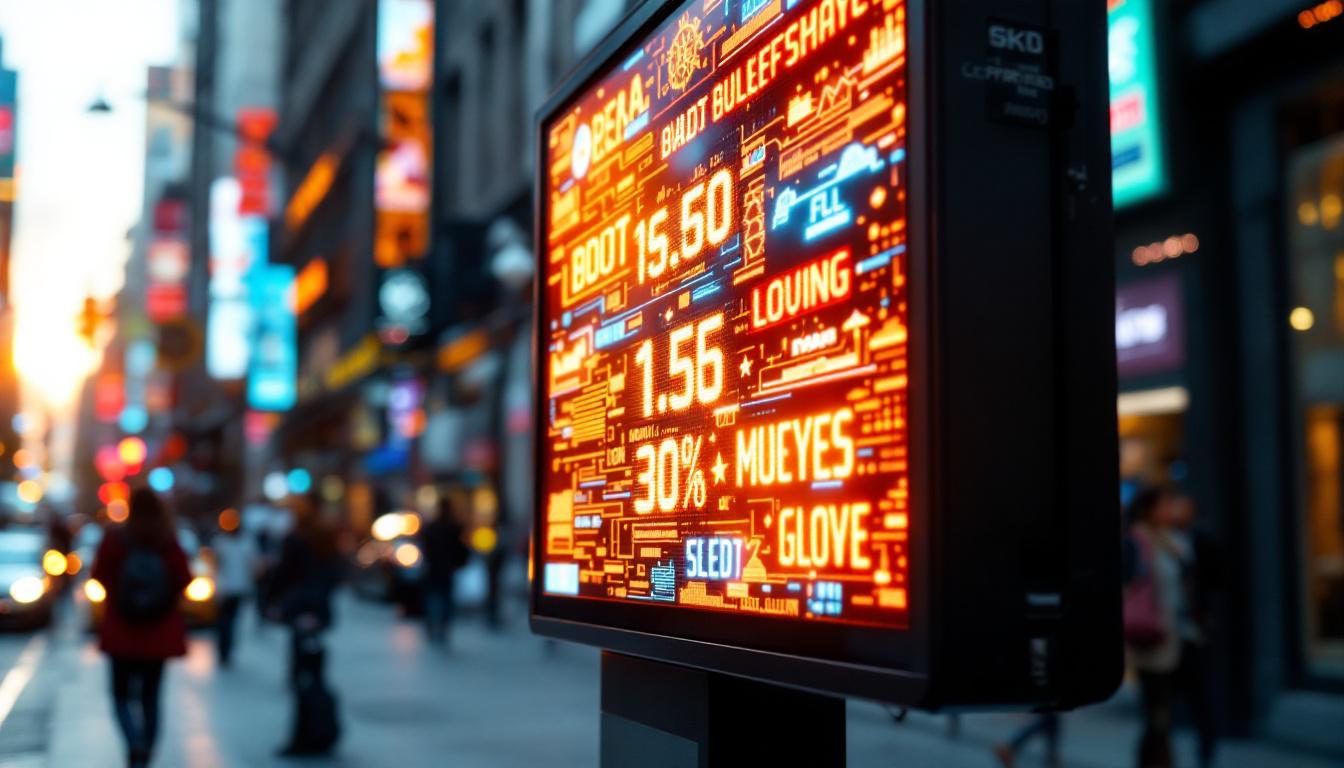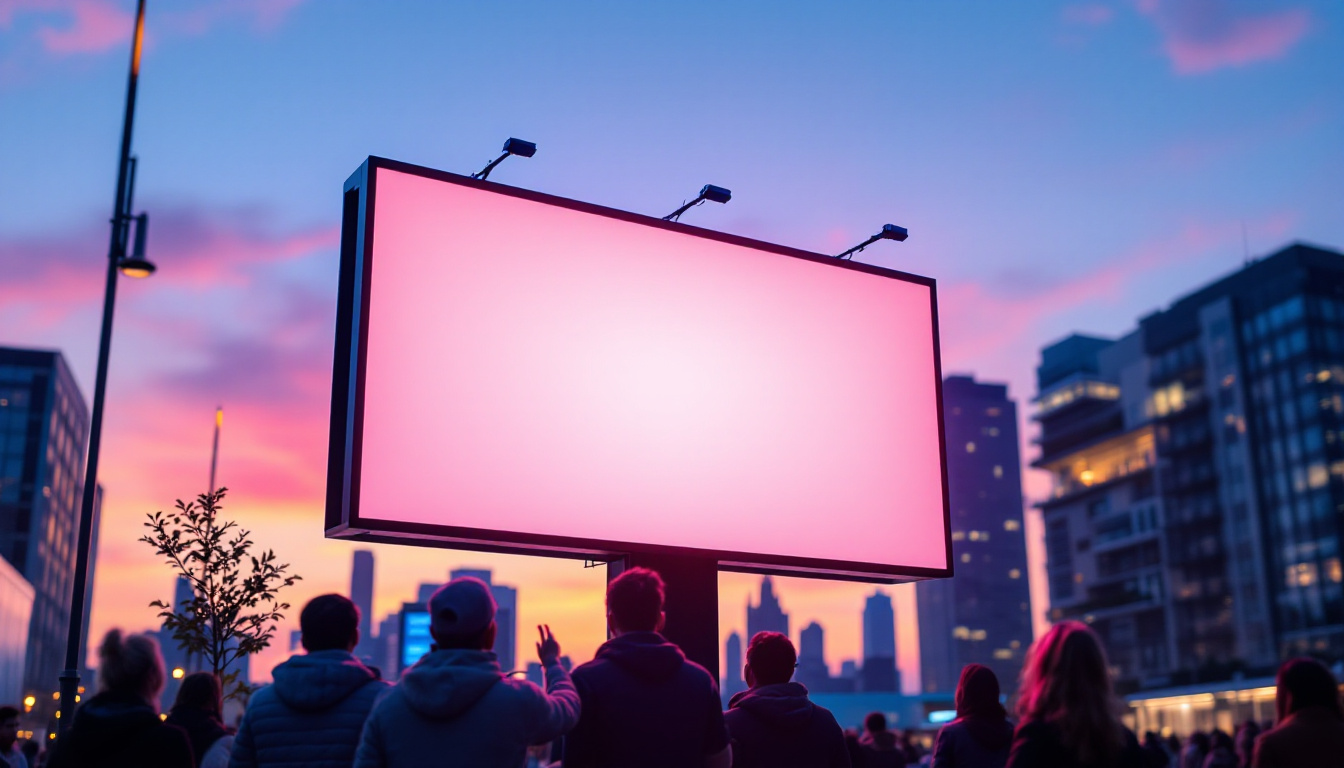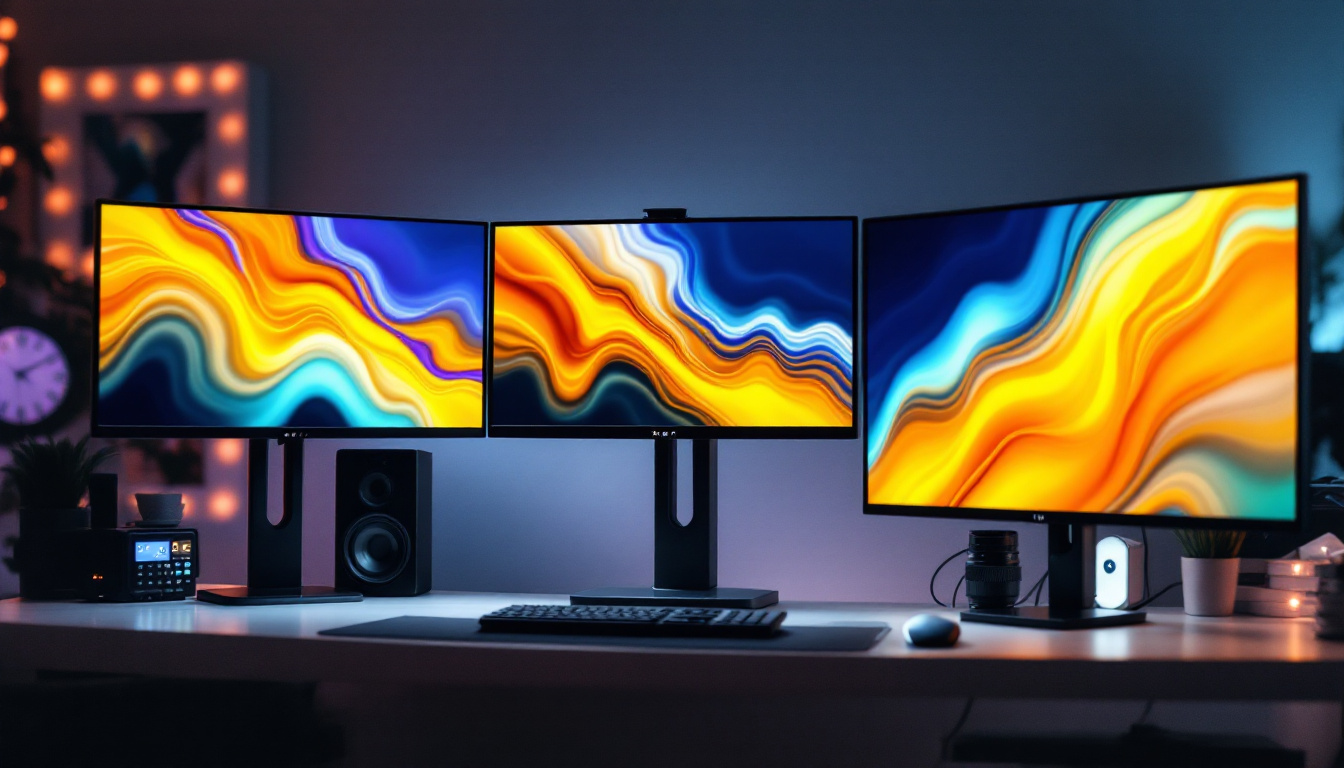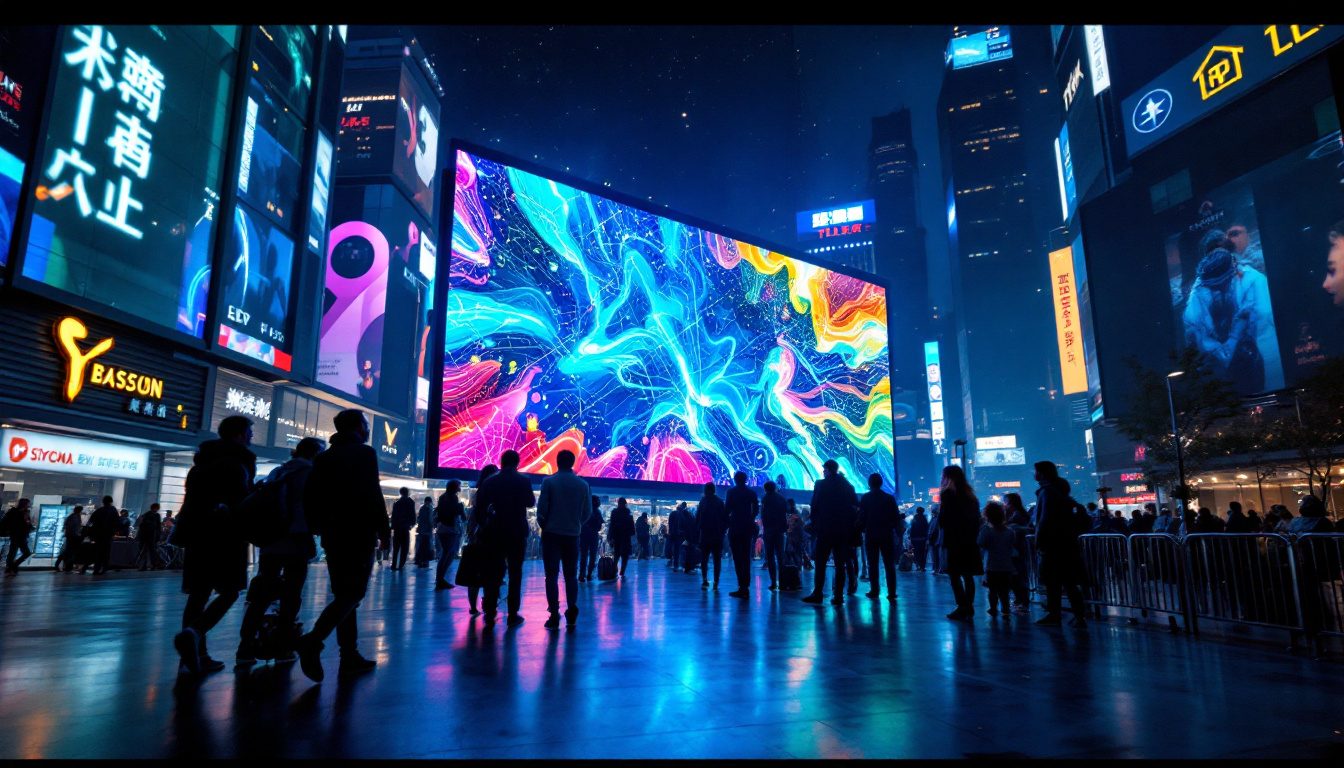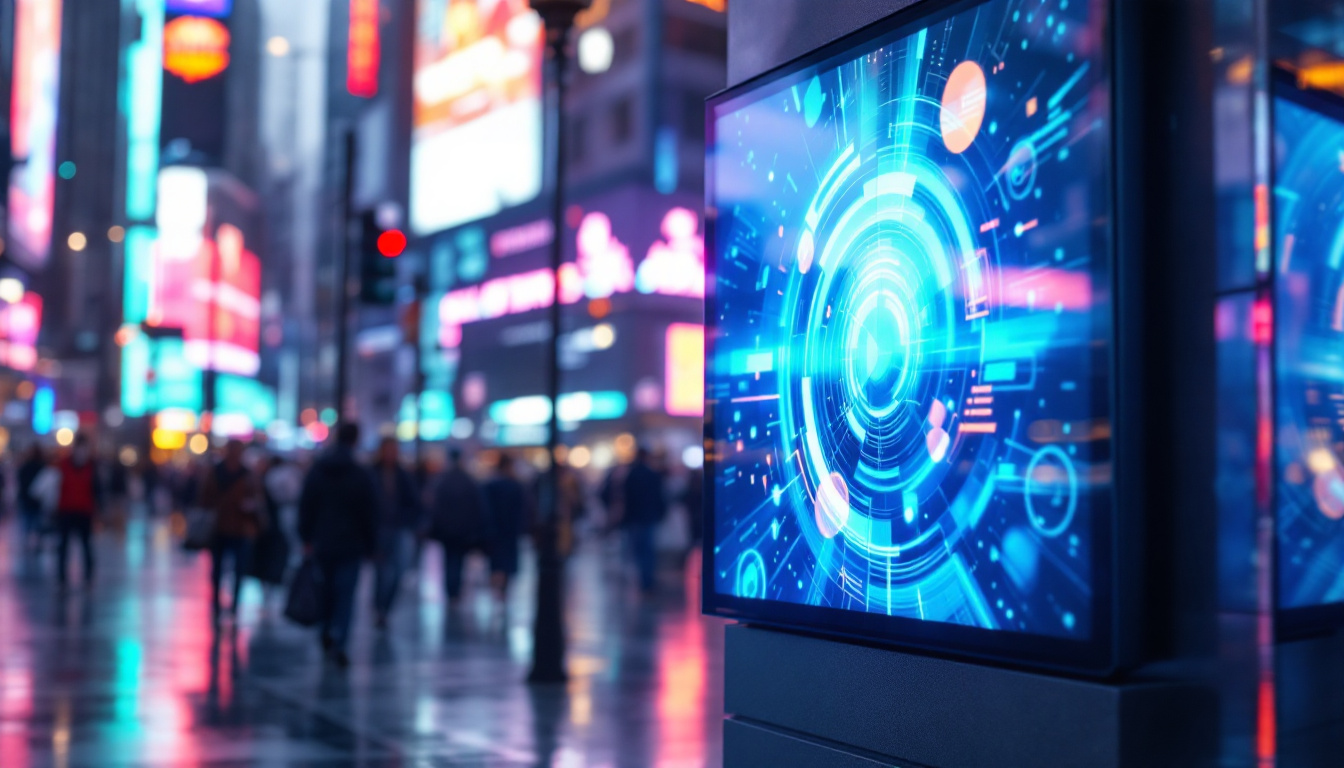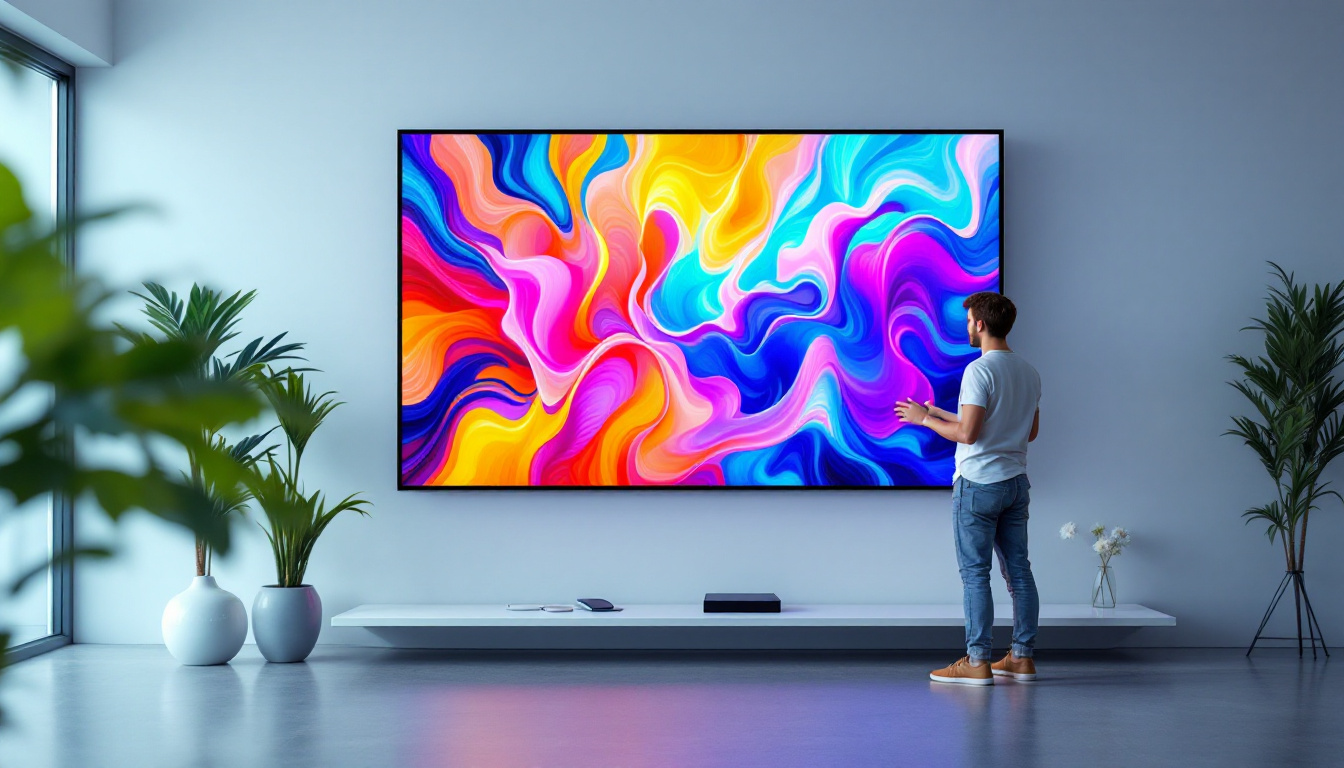In the world of modern technology, LED displays have become ubiquitous, transforming the way information is presented and consumed. From large-scale advertising billboards to the screens of handheld devices, LED technology is at the forefront of visual communication. This article delves into the intricacies of LED displays, exploring their functionality, applications, and advantages.
Understanding LED Technology
LED stands for Light Emitting Diode, a semiconductor device that emits light when an electric current passes through it. The fundamental principle behind LEDs is electroluminescence, where the movement of electrons within the semiconductor material generates photons, producing visible light.
LEDs are available in various colors, depending on the materials used in their construction. The most common colors include red, green, blue, and white, with RGB (red, green, blue) combinations allowing for a broad spectrum of colors to be displayed. This versatility makes LEDs suitable for a wide range of applications, from simple indicator lights to complex video displays. Furthermore, advancements in technology have led to the development of high-brightness LEDs, which are capable of producing intense light output, making them ideal for outdoor signage and large-scale displays that need to be visible in bright daylight conditions.
The Components of LED Displays
LED displays are made up of several key components that work in harmony to produce vibrant images and videos. The primary components include:
- LED Modules: These are the building blocks of an LED display, consisting of multiple LEDs arranged in a grid pattern. Each module can be individually controlled to create dynamic visuals.
- Control System: This system manages the input signals and determines how the LEDs will light up. It translates digital data into visual output, ensuring that the display accurately represents the intended content.
- Power Supply: A reliable power source is essential for LED displays, as they require a consistent voltage to operate efficiently. The power supply also helps regulate the current to prevent overheating.
In addition to these core components, LED displays often incorporate advanced features such as pixel pitch, which refers to the distance between the centers of two adjacent pixels. A smaller pixel pitch results in higher resolution and sharper images, making it particularly desirable for applications like indoor video walls and high-definition advertising. Moreover, many modern LED displays are equipped with smart technology, allowing for remote monitoring and control, which enhances their usability in various environments, from concert venues to retail spaces. This integration of technology not only improves the user experience but also facilitates real-time content updates, ensuring that displays remain relevant and engaging.
Types of LED Displays
LED displays come in various types, each designed for specific applications and environments. Understanding these types can help in selecting the right display for a given purpose.
Indoor LED Displays
Indoor LED displays are designed for use in enclosed spaces, such as shopping malls, conference rooms, and theaters. These displays typically have a higher pixel density, resulting in sharper images and better color accuracy when viewed from a close distance. They are often used for advertising, presentations, and entertainment purposes. Additionally, many indoor LED displays come equipped with advanced features such as touch interactivity and customizable content management systems, allowing businesses to tailor their messaging in real-time. This adaptability makes them particularly effective in environments where audience engagement is crucial, such as trade shows and corporate events.
Outdoor LED Displays
Outdoor LED displays are built to withstand harsh environmental conditions, including extreme temperatures, rain, and sunlight. These displays feature a lower pixel density compared to indoor models, as they are viewed from greater distances. Outdoor displays are commonly used for billboards, public announcements, and event promotions. Moreover, many outdoor LED displays are designed with high brightness levels to ensure visibility even in direct sunlight, and some models incorporate energy-efficient technologies to reduce power consumption. As cities become more digital, outdoor LED displays are increasingly being integrated into smart city infrastructure, providing real-time information and enhancing urban landscapes.
Transparent LED Displays
Transparent LED displays are an innovative solution that allows for a see-through effect while still providing vibrant visuals. These displays are often used in retail environments, allowing customers to view products behind the screen while still being engaged by dynamic content. The technology behind transparent displays is advancing rapidly, paving the way for new creative applications. For instance, they can be utilized in museums to overlay information on exhibits without obstructing the view, or in architectural designs to create stunning visual effects in glass facades. As the demand for immersive experiences grows, transparent LED displays are becoming a popular choice for brands looking to create unique customer interactions and enhance the aesthetic appeal of their spaces.
Applications of LED Displays
The versatility of LED displays has led to their adoption across various industries. Their ability to convey information clearly and attractively makes them an invaluable asset in many settings.
Advertising and Marketing
One of the most prominent applications of LED displays is in advertising and marketing. Billboards and digital signage equipped with LED technology can capture the attention of passersby with bright colors and moving images. Advertisers can easily update content in real-time, allowing for targeted marketing campaigns that can adapt to different audiences and times of day.
Entertainment and Events
In the entertainment industry, LED displays are used extensively in concerts, festivals, and sporting events. Large video walls made up of LED panels provide immersive experiences for audiences, enhancing the overall enjoyment of the event. The flexibility of LED technology allows for creative visual storytelling, making performances more engaging and memorable.
Corporate and Educational Use
LED displays are increasingly being utilized in corporate settings for presentations, training sessions, and internal communications. Their ability to display high-quality visuals makes them ideal for conveying complex information effectively. In educational institutions, LED displays can enhance learning experiences by providing interactive and engaging content for students.
Advantages of LED Displays
LED displays offer a multitude of advantages over traditional display technologies, making them a preferred choice for many applications. Here are some key benefits:
Energy Efficiency
One of the standout features of LED displays is their energy efficiency. Compared to traditional LCD and CRT displays, LEDs consume significantly less power, resulting in lower operational costs. This energy efficiency not only benefits businesses financially but also contributes to environmental sustainability.
Longevity and Durability
LED displays are known for their long lifespan, often lasting tens of thousands of hours before requiring replacement. This durability makes them a cost-effective investment, as they require less frequent maintenance and replacement compared to other display technologies. Additionally, many LED displays are designed to withstand harsh conditions, making them suitable for outdoor use.
High Brightness and Contrast
LED displays provide exceptional brightness and contrast ratios, ensuring that content remains visible even in brightly lit environments. This capability is particularly important for outdoor displays, where sunlight can wash out images on traditional screens. The vibrant colors produced by LED technology enhance the overall visual experience, making content more appealing to viewers.
Challenges and Considerations
While LED displays offer numerous advantages, there are also challenges and considerations to keep in mind when implementing this technology.
Initial Costs
The initial investment for LED displays can be relatively high compared to traditional display options. However, it is essential to consider the long-term savings associated with energy efficiency and reduced maintenance costs. Businesses should weigh the upfront costs against the potential return on investment over time.
Viewing Angles
Another consideration is the viewing angle of LED displays. Depending on the technology used, some LED displays may have limited viewing angles, which can affect visibility for audiences positioned at certain angles. It is crucial to select displays with wide viewing angles for applications where audience positioning varies.
Future Trends in LED Display Technology
The LED display industry is continuously evolving, with new technologies and innovations emerging regularly. Several trends are shaping the future of LED displays.
MicroLED Technology
MicroLED technology is gaining traction as a next-generation display solution. This technology utilizes tiny individual LEDs to create images, offering higher resolution and improved color accuracy. MicroLED displays are expected to become more prevalent in consumer electronics, such as televisions and smartphones, due to their superior performance and energy efficiency.
Integration with Smart Technology
As smart technology continues to advance, LED displays are increasingly being integrated with IoT (Internet of Things) systems. This integration allows for real-time data display, remote management, and interactive features that enhance user engagement. For example, smart LED displays can adapt content based on audience demographics or environmental conditions.
Environmental Sustainability
With growing awareness of environmental issues, the LED display industry is focusing on sustainability. Manufacturers are exploring eco-friendly materials and production processes, as well as recycling programs for old displays. As consumers become more environmentally conscious, sustainable practices will likely play a significant role in shaping the future of LED displays.
Conclusion
LED displays have revolutionized the way information is presented, offering vibrant visuals, energy efficiency, and versatility across various applications. As technology continues to advance, LED displays will likely become even more integral to communication and marketing strategies. Understanding the different types, applications, and benefits of LED displays is essential for businesses and individuals looking to leverage this technology effectively.
In a rapidly evolving digital landscape, embracing LED technology can provide a competitive edge, ensuring that messages are delivered clearly and attractively to audiences worldwide. As innovations continue to emerge, the future of LED displays promises to be bright and full of possibilities.
Explore Cutting-Edge LED Display Solutions with LumenMatrix
Ready to elevate your visual communication strategy with the latest in LED display technology? Look no further than LumenMatrix, a pioneer in crafting immersive and dynamic visual experiences. From the vibrant Indoor LED Wall Display to the robust Outdoor LED Wall Display, and from the versatile Vehicle LED Display to the innovative LED Transparent Display, LumenMatrix offers a comprehensive range of solutions tailored to your needs. Discover how our state-of-the-art LED display modules can transform your brand’s visibility and audience engagement. Check out LumenMatrix LED Display Solutions today and step into the future of digital signage.

